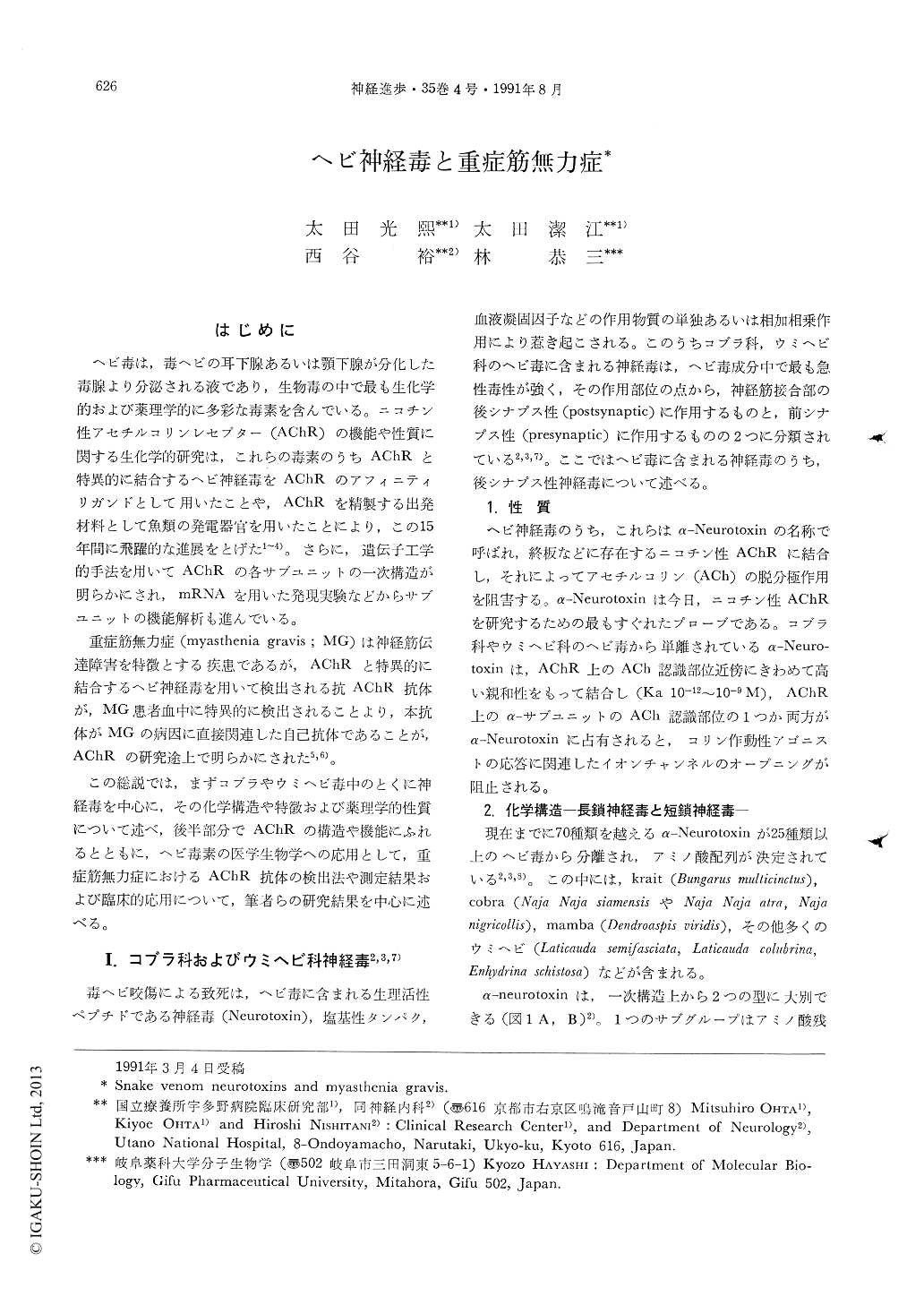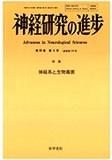Japanese
English
- 有料閲覧
- Abstract 文献概要
- 1ページ目 Look Inside
はじめに
ヘビ毒は,毒ヘビの耳下腺あるいは顎下腺が分化した毒腺より分泌される液であり,生物毒の中で最も生化学的および薬理学的に多彩な毒素を含んでいる。ニコチン性アセチルコリンレセプター(AChR)の機能や性質に関する生化学的研究は,これらの毒素のうちAChRと特異的に結合するヘビ神経毒をAChRのアフィニティリガンドとして用いたことや,AChRを精製する出発材料として魚類の発電器官を用いたことにより,この15年間に飛躍的な進展をとげた1~4)。さらに,遺伝子工学的手法を用いてAChRの各サブユニットの一次構造が明らかにされ,mRNAを用いた発現実験などからサブユニットの機能解析も進んでいる。
重症筋無力症(myasthenia gravis;MG)は神経筋伝達障害を特徴とする疾患であるが,AChRと特異的に結合するヘビ神経毒を用いて検出される抗AChR抗体が,MG患者血中に特異的に検出されることより,本抗体がMGの病因に直接関連した自己抗体であることが,AChRの研究途上で明らかにされた5,6)。
Snake venom is known to have many pharmacologic and enzymatic activities. By an isolation study of cobra and krait snake venom components, it has been proved that the main lethal effects of these snake venoms are due to the heat-stable low molecular polypeptides (Neurotoxin). Several neurotoxic components inhibit neuromuscular transmission by attacking different targets of neuromus-cular junction. Therefore neurotoxins have been utilized in pharmacological and biochemical studies of acetylcholine receptor (AChR) in the neuron and neuromuscular junction. Particularly, the use of the fish electric organs as a source of AChR and of 125I-labeled srake venom neurotoxin to identify AChR have made a great advance for the purificaion and characterization of AChR, and for the un-derstanding of the pathological mechanisms impairing neuromuscular transmission in myasthenia gravis (MG). Anti-AChR antibodies have been demonstratd to be the principal agent in the pathogenesis of MG, and their determination allows definite diagnoses of MG.

Copyright © 1991, Igaku-Shoin Ltd. All rights reserved.


